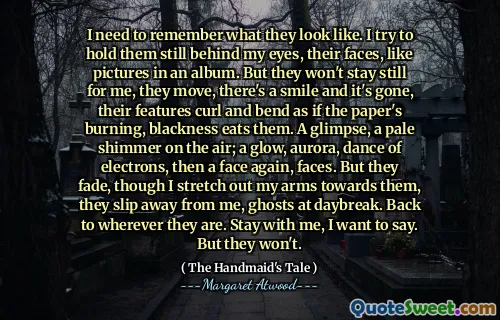The sitting room is subdued, symmetrical; it's one of the shapes money takes when it freezes.
In "The Handmaid's Tale," Margaret Atwood presents a sitting room that is both subdued and symmetrical, suggesting a cold and lifeless environment. This description illustrates how wealth can become stagnant, representing a lack of warmth or vitality in spaces that embody affluence. The symmetry implies a carefully organized space that lacks spontaneity, hinting at a society where control and order are prioritized over freedom and emotion.
The portrayal of the sitting room as a place where money "freezes" emphasizes the chilling effect of a rigid, oppressive society. Atwood's imagery invites readers to reflect on the broader themes of power dynamics and the consequences of commodifying aspects of life. The static nature of the setting mirrors the constraints imposed on the characters, highlighting the overarching control they experience in their world.






